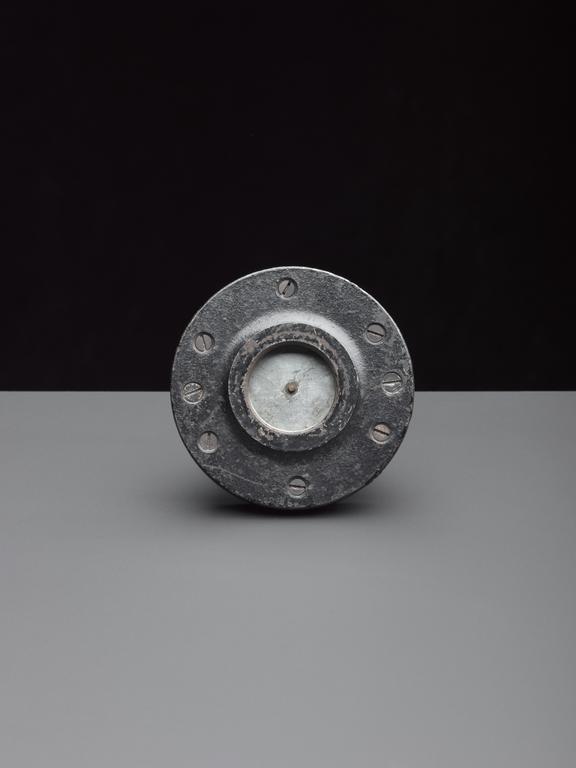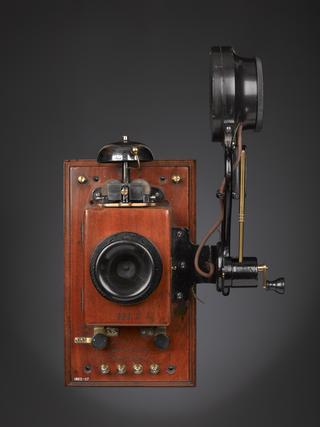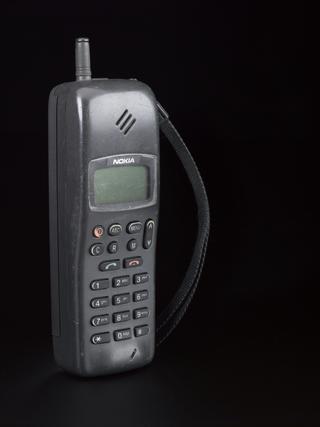
Edison carbon button transmitter No. 32, 1878
- Made:
- 1878 in United States
- maker:
- Thomas Alva Edison




Edison carbon button transmitter No. 32, invented by Thomas Edison, United States, 1878.
In 1877, Thomas Edison (1847-1931) was invited by the Western Union Telegraph Company to develop and improve methods of transmitting speech. The carbon transmitter was one of the resulting developments, and is very similar to microphones designed by David Edward Hughes (1831-1901). It consists of a button of compressed soft carbon powder, about the size of a ten-pence piece, placed between two brass disks, against one of which an iron diaphragm presses. Speech into the mouthpiece causes the diaphragm to vibrate and produces variations in the resistance.
Details
- Category:
- Telecommunications
- Object Number:
- 1926-1061
- Materials:
- copper (metal) and metal (unknown), carbon
- Measurements:
-
overall: 35 mm x 84 mm diameter, .376kg
- type:
- telephone component
- credit:
- Donated by BT Heritage and Archives




